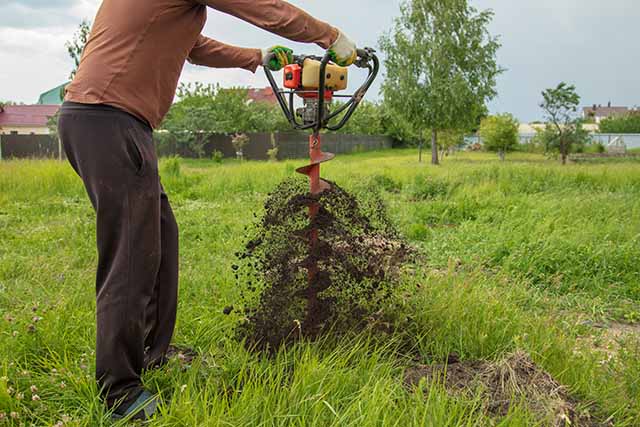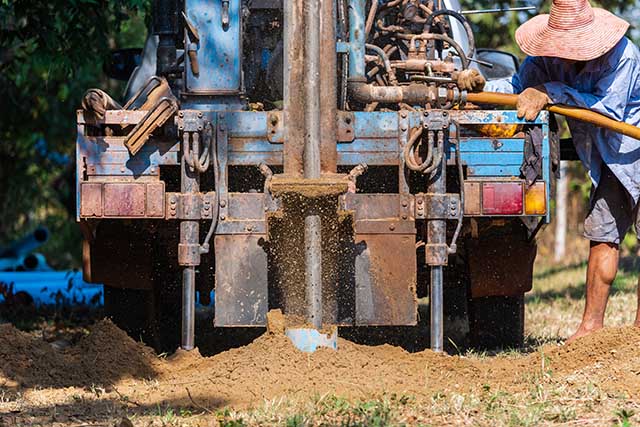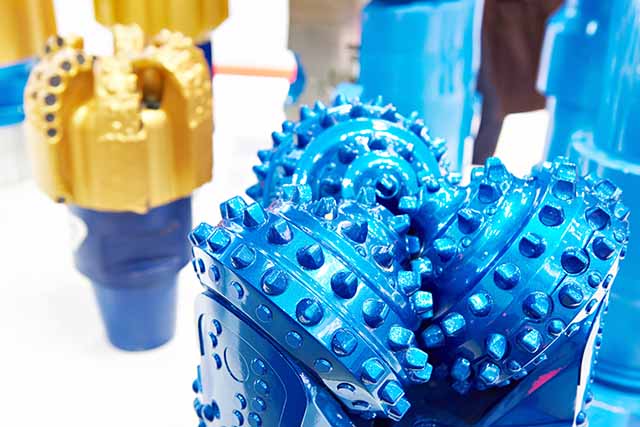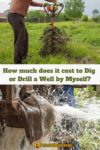Many people want a well because it is a reliable off-grid water source, and they won’t have to rely on public utilities.
Having a well professionally drilled can be incredibly expensive, which is why there has been a trend towards DIY well digging.
Here’s what you need to know about the costs of digging or drilling your own well, including whether those DIY well kits are worth it.
On Average How Much Does It Cost to Dig a Well?
Digging your own shallow well with the sand point or auger method can cost as little as $100. but it will likely cost at least $700, plus the cost of the off-grid well pump and your labor.
However, unless you only have loose, sandy soil and a high water table, a DIY well will likely cost you considerably more. Aside from the cost aspects, digging your own well in many situations isn’t feasible.
Read more about the different types of well pumps.
Professional Well Drilling Costs
The cost of a professional well varies drastically depending on the type of soil, access, permit requirements, and how deep the well needs to be.
The actual cost of drilling is usually around $9 to $30 per foot, plus another $6 to $20 per foot for casing.
With all additional costs tallied, you can expect professional well drilling to cost at least $1,750.
The average cost of a residential well is $3,750 to $15,300.
It’s Probably Illegal to Drill Your Own Well
Look at your local laws before you look deeper into drilling your own well. Most states in the USA have strict laws that allow only certified well drillers to dig wells. Sometimes exemptions allow homeowners to drill their own wells on their properties, though.
For more info, read: Off Grid Laws of Each State
Reasons NOT To Drill Your Own Well

Even if drilling or digging your own well is legal, it might not be a good idea. While I don’t want to discourage people from taking the DIY approach, it’s still important to be realistic.
Here are some reasons you shouldn’t drill your own well.
It Might Not Be Possible
DIY well drilling equipment won’t cut it if you need a deep well or rocky soil. You will end up wasting money on useless equipment.
In theory, you could rent professional equipment — but it’s almost impossible to find a company that will rent you their professional drill rig.
It’s Easy to Screw Up
While all those YouTube videos and online tutorials make it seem easy, digging your own well is difficult. There is a very high learning curve.
Unlike many DIY home projects, this is not something you can learn “along the way.” Any mistakes you make could be disastrous.
For example, you could get surface water in the water table if not done correctly. Not only would you contaminate your well, but the water of everyone else in that table.
Numerous other things could go wrong. Take this story as an example:
“My dad decided to drill on our land when I was a kid. He heard the neighbors hit water at a certain depth (800ft or so), so he bought a kit and went at it. Many grueling man hours later, much sand and water and clay and bedrock… he discovered that our land doesn’t have a pocket of water for 1,300ft.
We eventually had to pay over $13K for a well in another area of the property, since he screwed up the area where he first started digging. Then it cost more to plumb into the house, since the well is now out 20′ further than it should be.”
Dangerous
DIY wells can be hazardous. Hand-dug wells are dangerous as it only takes a small cave in to get buried alive in the well. There are also risks associated with using new machinery.
Poor Water Quality
Most DIY wells are shallow wells. At these low depths, the water quality can be very poor. It might be fine for watering your yard, but you’d need intensive treatment to make it potable or even use it on edible plants.
Read about well water filtration systems
The Cost Savings Might Not Be that Great
It is really only feasible to dig your own shallow well. The average cost to have a professional dig a shallow well is only $1,800 and $3,000.
Taking the DIY approach might not save you that much money once you calculate the equipment you need to buy or rent plus your labor.
Also Read:
Equipment for Digging Your Own Well
It varies depending on the well type, but this is the equipment you generally need to dig a well.
1. Drill Rig

The drill rig holds the other well drilling equipment. It can be a simple triangle construction but is usually a vertical stand. If using a hand auger for a very shallow well, you might not need a drill rig.
2. Motor
While drilling a shallow well by hand is possible, a motor will make the job easier. I’ve heard of people adapting post-hole digger machines to dig wells.
You’ll need a pneumatic drill and an air compressor for deeper wells. These can usually be rented. If you want an even deeper well or have difficult soil, you’ll need to rent a truck-mounted drilling machine.
3. Well Drill Bits or Drill Point

The well drill bit or point is the part that bites into the soil. There are various types of well bits depending on the soil and rocks. It’s possible to make your own drill auger bit by cutting teeth into the end of a PVC pipe.
4. Stem
The stem connects the drill bit to the rig. The stem usually comes in multiple pieces. As you dig deeper into the earth, you attach another piece of the stem to go deeper.
5. Casing
The casing prevents the well from collapsing and keeps the well hole open.
6. Well Screen
The well screen is located at the bottom of the well hole. It has hundreds or even thousands of tiny slits which allow water to pass through but prevents debris like sand from getting through.
7. Pump
The pump uses water to flush the well hole as you drill.
8. Drilling Additives
You may need to use additives like powdered clay or liquid polymers when drilling. These prevent the well hole from collapsing as you drill.
DIY Well Drilling Kit Costs
There are a lot of companies that sell DIY well drilling kits. Auger well kits usually cost around $500 to $700. Sand point well kits typically cost around $325 to $650. These kits do not include additional tools and supplies you may need, like motors or rigs.
Are they worth it?
It depends. They are a great solution for people who have ideal drilling conditions and only need a simple well for watering their lawn (or maybe an emergency water source). But, if you think you can drill a 25+ foot deep well through rocky soil with one of these DIY well kits, you will be very disappointed.
Alternatives to Digging a Well
If you need a reliable water source, you will likely need to pay for professional well digging. However, that doesn’t mean you can’t have a backup water source.
Rainwater harvesting is much easier to DIY than well drilling, is legal in all states, and you probably don’t even need a permit.
Also read: How to Set Up a Rainwater Harvesting System



Rain harvesting is not legal in all states now.
It’s legal pretty much everywhere though there are restrictions when it comes to collecting large amounts of water.